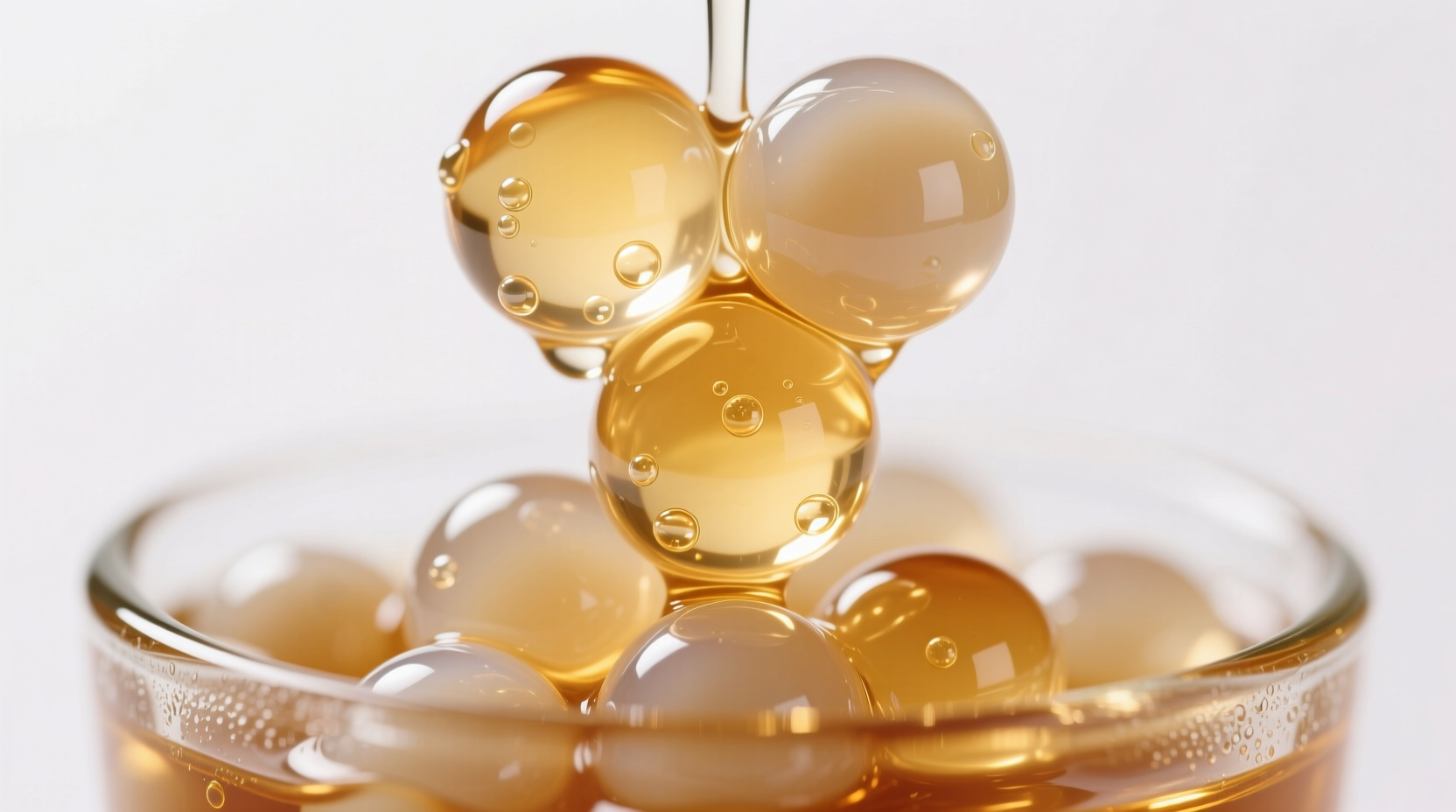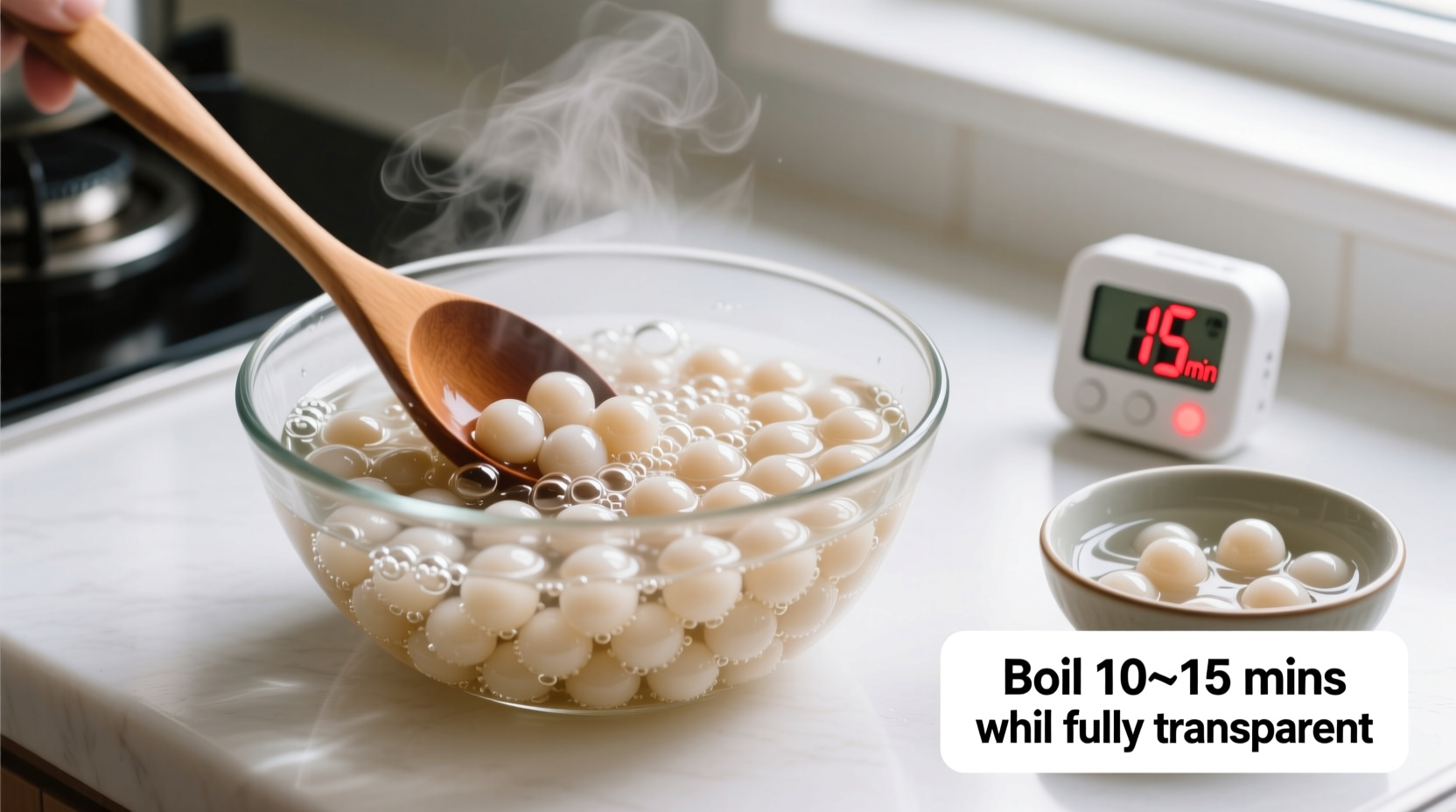Nothing ruins a refreshing bubble tea experience like poorly cooked tapioca pearls—either rock-hard or mushy beyond recognition. As a chef who's perfected boba preparation for over a decade, I've discovered that mastering how do i cook tapioca pearls comes down to precise ratios, timing, and that critical post-cooking step most home cooks miss. Follow this guide to achieve the perfect chewy "Q" texture that defines authentic bubble tea.
Understanding Tapioca Pearls Before You Start Cooking
Tapioca pearls, also called boba or bubble tea pearls, are made from cassava root starch. When properly cooked, they transform from hard, opaque spheres into translucent, delightfully chewy delights. The key to success lies in understanding the science of starch gelatinization—the process where starch granules absorb water and swell when heated.
According to the FDA's food science resources, starch gelatinization occurs between 140-212°F (60-100°C), which explains why boiling water is essential. Skipping the resting phase interrupts this process, resulting in inconsistent texture.
| Pearl Type | Diameter | Water Ratio | Boiling Time | Resting Time |
|---|---|---|---|---|
| Traditional Black | 8-10mm | 1:6 | 25-30 min | 7-10 min |
| Mini Pearls | 4-5mm | 1:8 | 15-20 min | 5-7 min |
| White/Crystal | 6-8mm | 1:7 | 20-25 min | 5-10 min |
Your Essential Tapioca Pearl Cooking Toolkit
Before diving into how to cook tapioca pearls properly, gather these tools for consistent results:
- Heavy-bottomed pot (prevents scorching)
- Slotted spoon (for gentle pearl transfer)
- Timer (precision matters!)
- Glass bowl (to monitor cooking progress)
- Measuring cups (for accurate water ratios)
Step-by-Step Guide: How Do I Cook Tapioca Pearls Perfectly
Preparation Phase: Setting Up for Success
Many beginners make the critical mistake of rinsing tapioca pearls before cooking. Never rinse dried pearls—this removes the starch coating that helps maintain their shape during boiling. Instead:
- Measure 1 cup of dry tapioca pearls
- Add to 6 cups of cold water in your heavy pot
- Use a 1:6 ratio for traditional black pearls (adjust for other types using our chart above)
This precise ratio for cooking tapioca pearls ensures even cooking without overcrowding, which causes uneven texture.
Cooking Process: The Critical Boiling Stage
Bring the water to a rolling boil before adding pearls—this prevents premature starch release that makes pearls sticky. Once boiling:
- Add pearls slowly while stirring gently with a wooden spoon
- Maintain a vigorous boil for the first 5 minutes
- Reduce to a gentle simmer for the remaining time
- Stir every 5 minutes to prevent sticking
Watch for the visual cue: pearls become completely translucent with no white center. For how long to cook tapioca pearls, follow our size-specific timing chart—undercooking leaves hard centers, while overcooking creates mush.

The Secret Step: Resting and Sweetening
Here's where 90% of home cooks fail when learning how do i cook tapioca pearls correctly. After boiling:
- Turn off heat and cover pot for 5-10 minutes
- Drain through a fine mesh strainer
- Immediately transfer to sugar syrup (1:1 sugar to water ratio, boiled 2 minutes)
This resting phase completes starch gelatinization internally. Skipping it results in pearls that seem done but become hard as they cool. The sugar syrup serves two critical purposes: it prevents sticking and maintains chewiness through osmotic balance.
Troubleshooting Common Tapioca Pearl Problems
Pearls Are Too Hard
If your tapioca pearls are hard after cooking, you likely:
- Used insufficient water (starch concentration too high)
- Didn't maintain consistent boil temperature
- Skipped the resting phase
Solution: Return to boiling water for 5-minute increments until translucent throughout.
Pearls Are Mushy or Falling Apart
Overcooked pearls usually result from:
- Excessive cooking time
- Too much stirring during cooking
- Using old or low-quality pearls
Prevention: Set multiple timers and use our size-specific cooking chart. Fresh pearls should have a uniform dark color with no white specks.
Pro Tips for Restaurant-Quality Results
Professional bubble tea shops use these advanced techniques when cooking tapioca pearls for commercial use:
- Batch cooking: Cook no more than 2 cups of dry pearls at once for even results
- Syrup variations: Add 1 tbsp brown sugar for traditional black pearls or jasmine tea for floral notes
- Temperature control: Keep finished pearls in syrup at 140°F (60°C) for service
- Freshness window: Use within 4 hours for optimal texture (never refrigerate)
According to culinary research from the Journal of Food Science, tapioca pearls maintain ideal texture for 3-4 hours at room temperature in sugar syrup. Refrigeration causes starch retrogradation, making pearls hard and chewy.
Storing Leftover Cooked Tapioca Pearls
While freshly cooked pearls are best, you can store them properly for limited reuse:
- Keep in sugar syrup at room temperature for up to 4 hours
- Do NOT refrigerate—this destroys texture
- For extended storage, freeze cooked pearls in syrup for up to 1 month
- To revive frozen pearls, simmer in fresh syrup for 2-3 minutes
Understanding how to store cooked tapioca pearls properly ensures you don't waste ingredients while maintaining quality.











 浙公网安备
33010002000092号
浙公网安备
33010002000092号 浙B2-20120091-4
浙B2-20120091-4